We began our new IB unit “Who We Are” at the start of May, and on the very first day, we introduced the central idea:
“Taking care of our bodies helps us stay healthy and strong.”
5月のはじめに、新しいIBユニット「Who We Are(私たちは誰か)」が始まりました。初日には、次のセントラルアイディアを紹介しました。
「自分の体を大切にすることで、健康で元気に過ごすことができます。」
To kick off the unit, we started with a group discussion about the different parts of the body and why we need them. The children were enthusiastic and eager to share what they knew! ユニットのスタートとして、まずは体のいろいろな部分について、そしてそれらがなぜ必要なのかについてグループで話し合いました。子どもたちはとても意欲的で、知っていることを楽しそうに共有してくれました。
Together, we explored: 一緒に探究した体の部分は次の通りです:
- Eyes – we closed our eyes and realized we need them to see.
- 目 – 目を閉じてみて、見るために必要だと気づきました。
- Hands – we use them to touch, and one K2 friend added that we also use them to hold chopsticks and spoons to eat.
- 手 – 触るときに使うだけでなく、K2のお友だちが「お箸やスプーンを持つときにも使うよ」と教えてくれました。
- Legs – we use them to walk.
- 足 – 歩くために使います。
- Ears – we use them to hear.
- 耳 – 音を聞くために使います。
- Nose – we use it to smell.
- 鼻 – においをかぐために使います。
- Mouth – we use it to eat.
- 口 – 食べるために使います。
- Teeth – we use them to bite food.
- 歯 – 食べ物をかむときに使います。

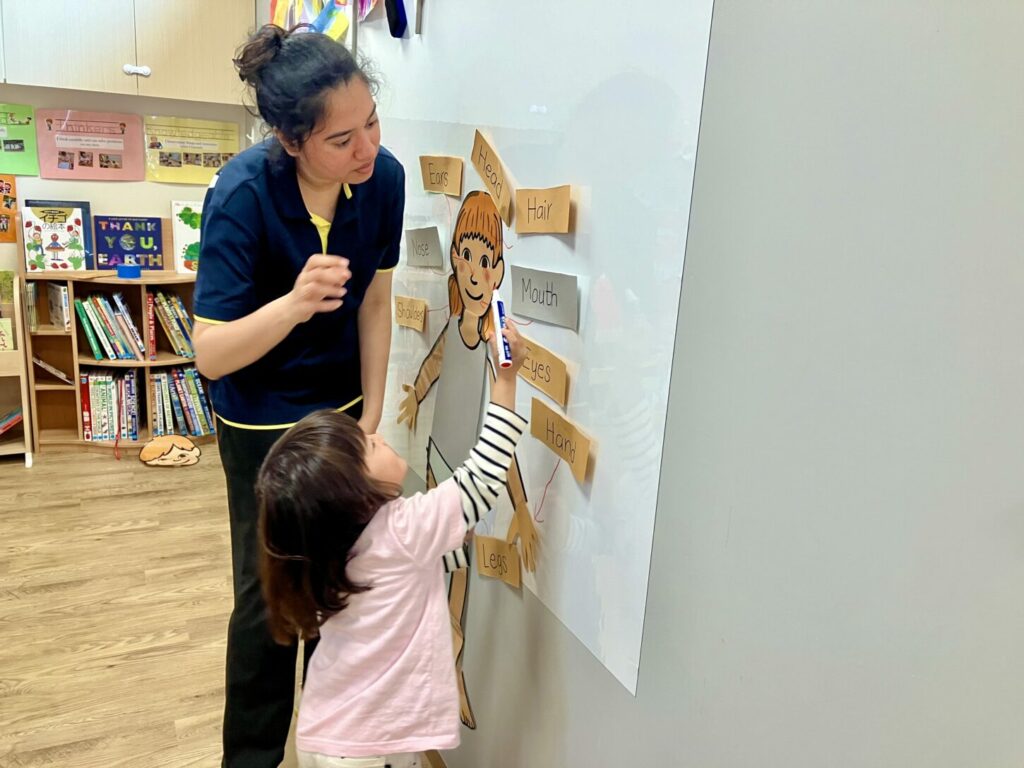
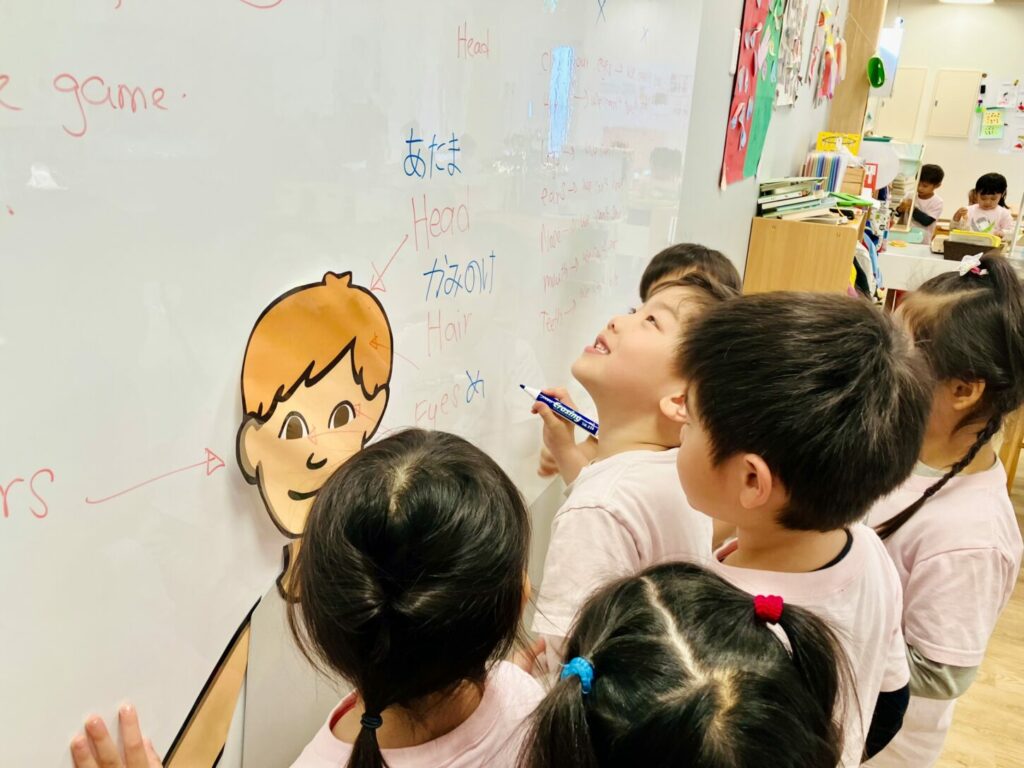
We also talked about how babies don’t have teeth and can’t chew food, so they drink milk. The children discussed how we grow from being babies to children, then adults, and eventually become elderly. They mentioned that babies can’t do many things by themselves because their muscles aren’t strong yet — their understanding was truly impressive!
また、赤ちゃんは歯がないので、食べ物をかむことができず、ミルクしか飲めないという話もしました。私たちは赤ちゃんから子ども、そして大人、最終的にはお年寄りになるという成長の過程についても話しました。赤ちゃんは筋肉がまだ弱いため、自分で色々なことができないということに、子どもたちはよく気づいていて、とても驚かされました。
Later, we used a library book to look at the human skeleton. One K2 child immediately identified it as a skeleton, and a K3 friend added, “They are bones!” When asked if we can see bones, a child cleverly said, “Yes, chicken bones!” showing their ability to connect ideas from different contexts.
その後、図書館の本を使って人間の骨格を見ました。K2のお友だちはすぐに「スケルトン(骨)」と答え、K3のお友だちは「それは骨だよ」と教えてくれました。「骨って見えるの?」と質問したところ、「チキンの骨は見えるよ!」と答えた子もいて、人間の体と動物の体を結びつけるすばらしい発想を見せてくれました。
We also enjoyed dancing to “Head, Shoulders, Knees, and Toes” and played a body assembly game, where the children completed a human figure using different parts like the face, hands, and legs.
さらに、「Head, Shoulders, Knees, and Toes」の歌に合わせてダンスをしたり、体のパーツ(顔、手、足など)を組み立てて人の形を完成させるゲームも楽しみました。

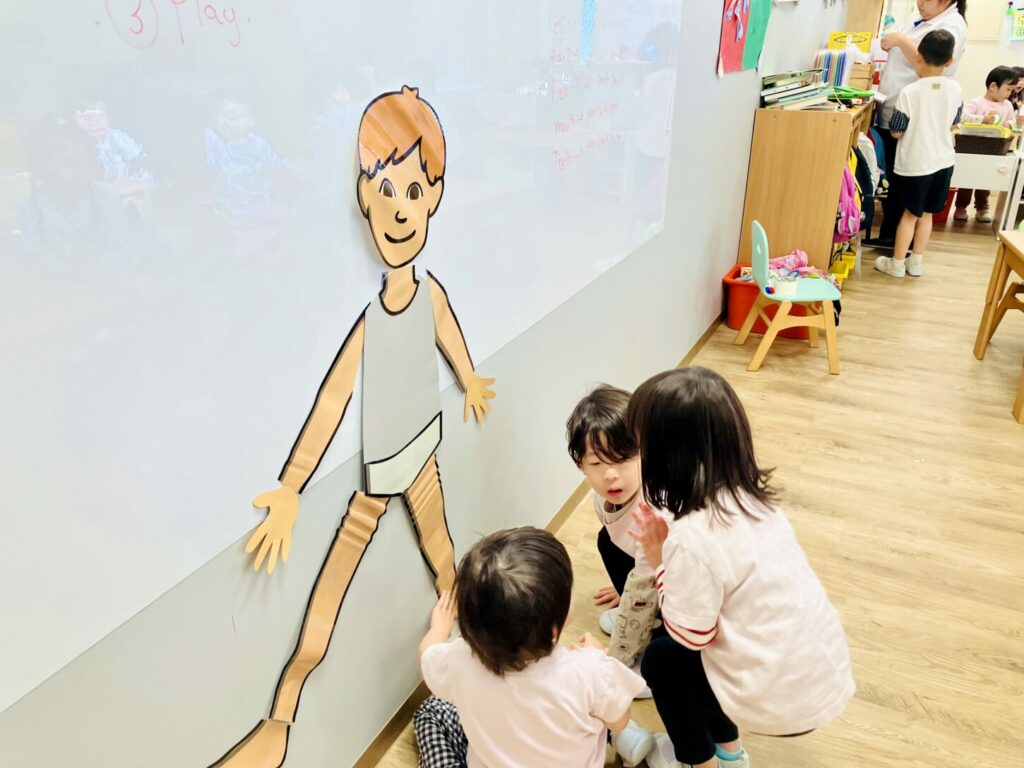
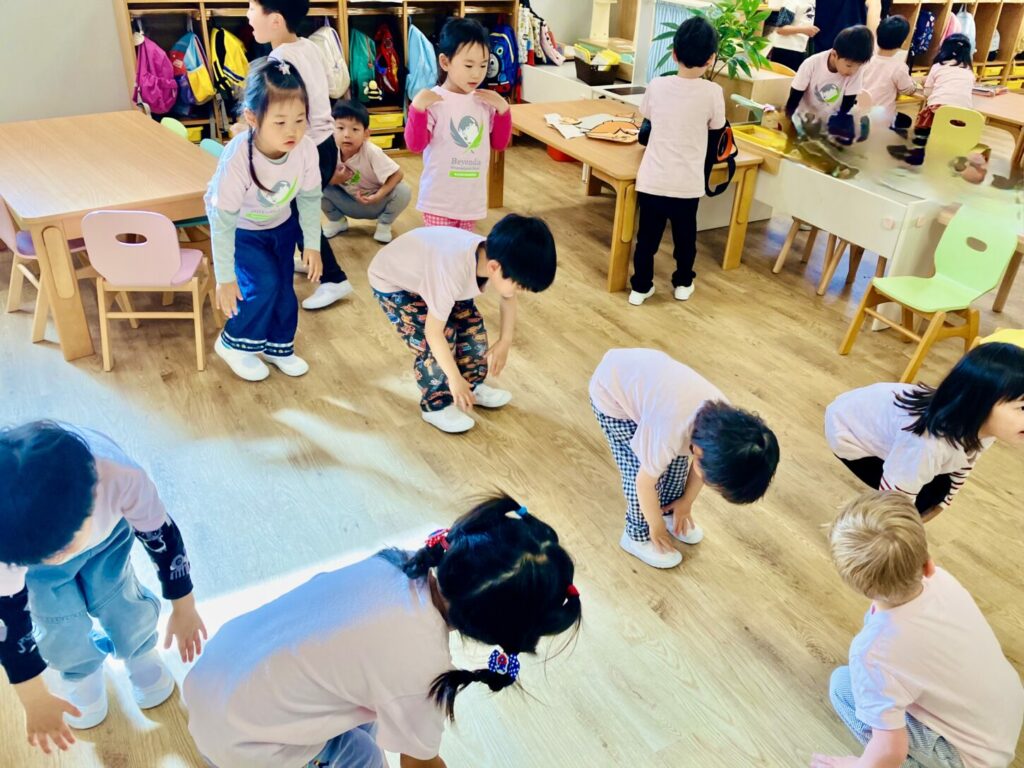
To finish our first day, we used clay to make human bodies. The children showed great creativity and knowledge—some even added internal parts like the heart, stomach, and intestines.
最後に、粘土を使って人間の体を作りました。子どもたちはとても創造的で知識も豊富で、中には心臓、胃、小腸、大腸などの内臓まで表現した子もいました。
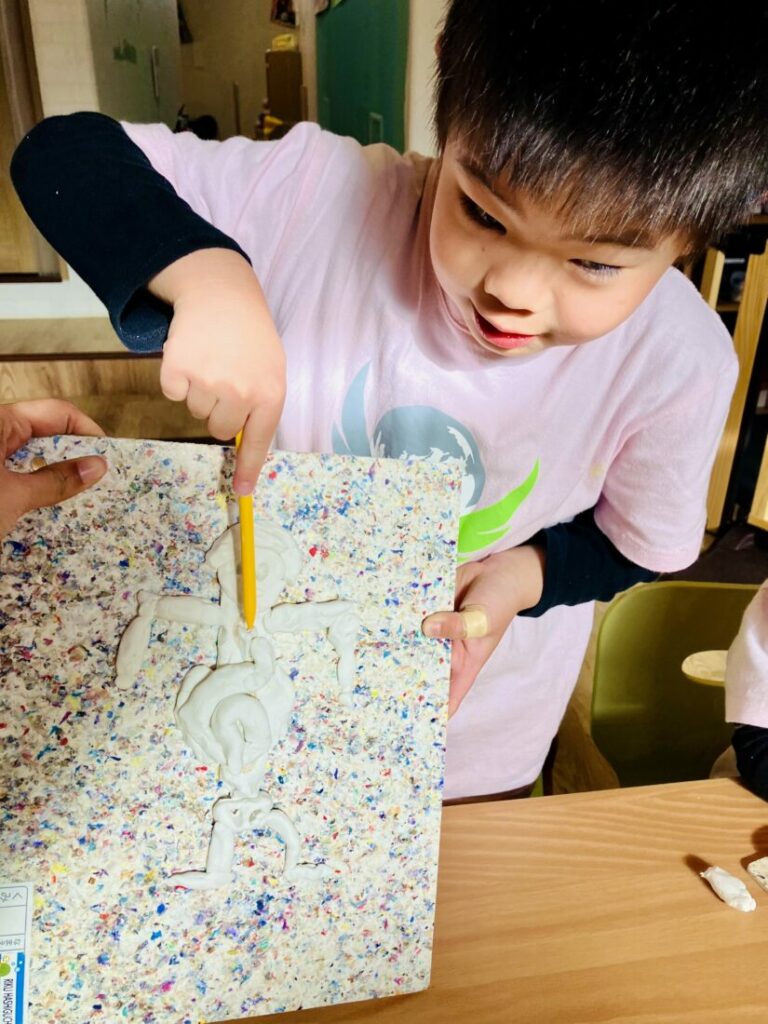

It was a fun and meaningful way to begin our new unit, and we’re looking forward to continuing our inquiry in the coming weeks.
新しいユニットのスタートにふさわしい、楽しくて意味のある一日となりました。今後の探究活動もとても楽しみです。

